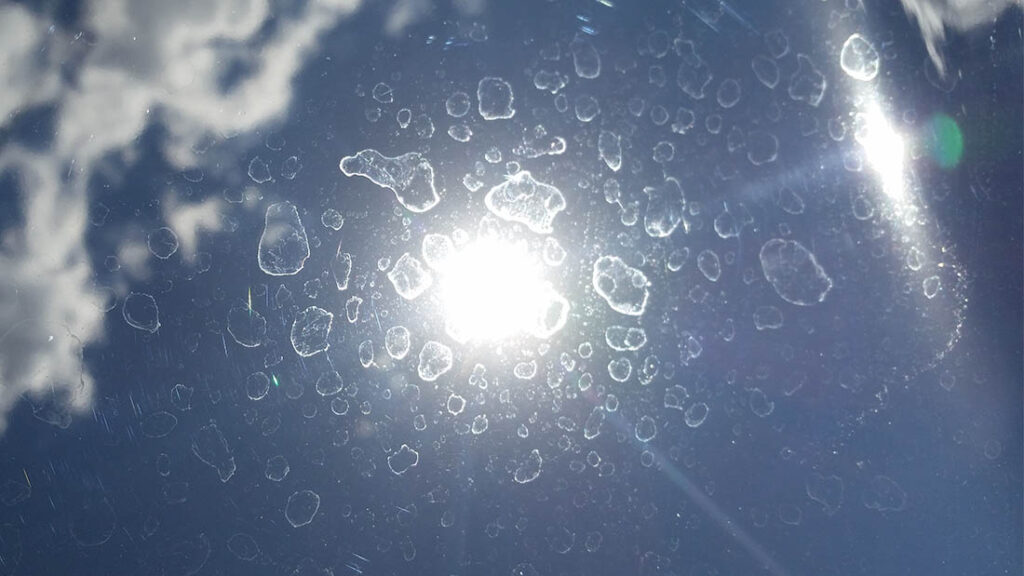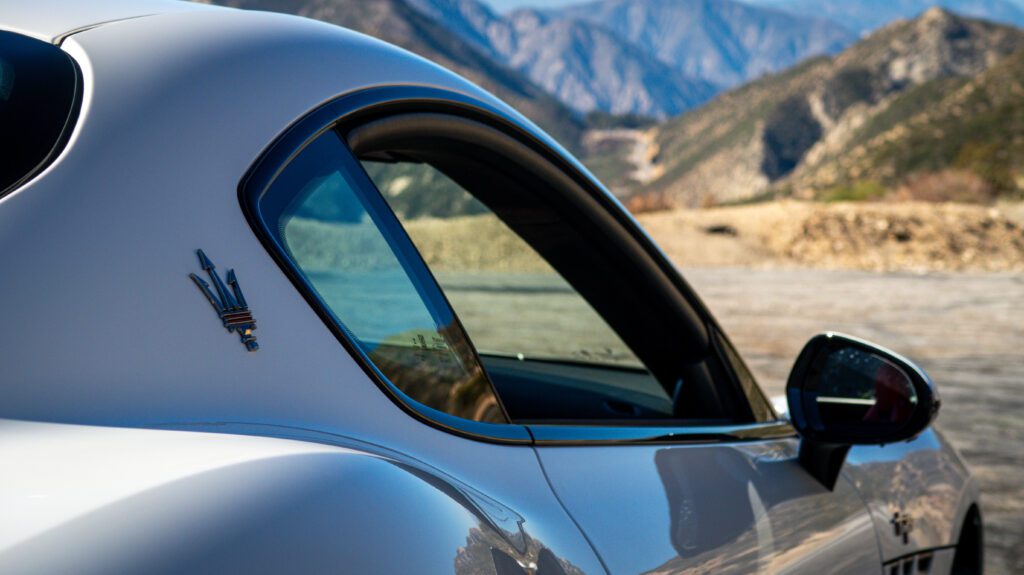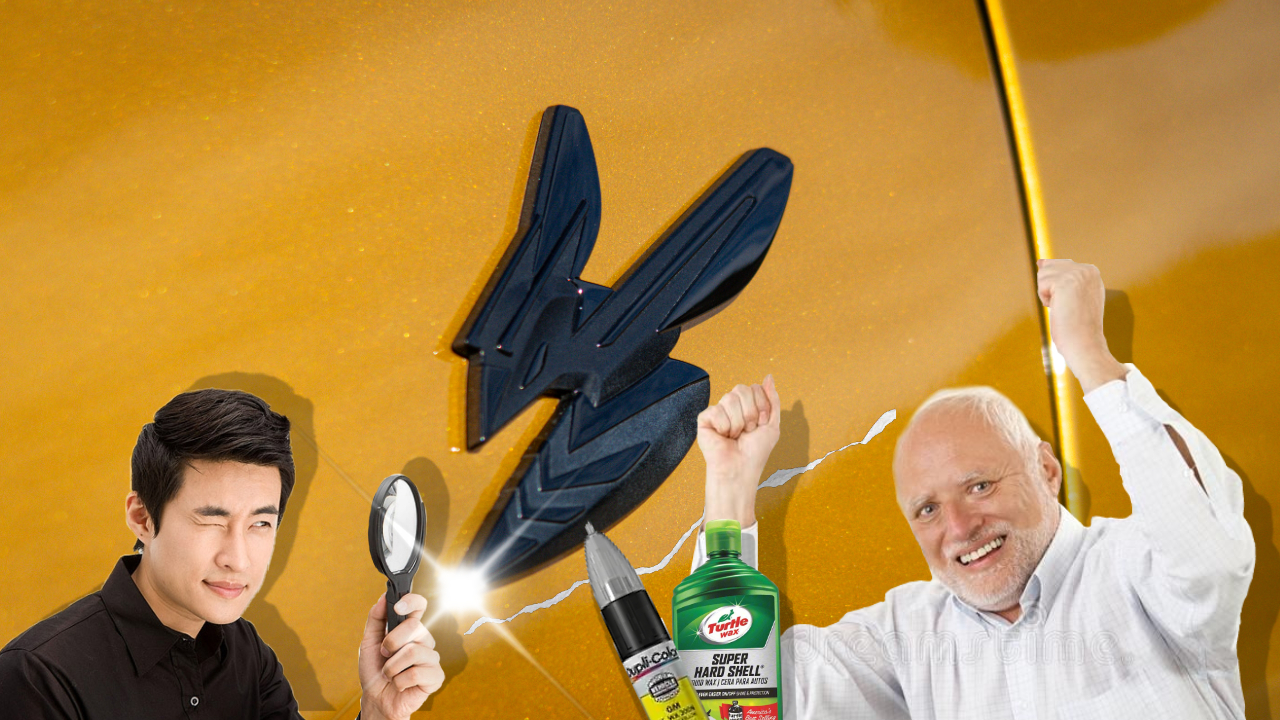You ever walk by a car on the street and go, “Damn, what the hell happened to you?”
It’s me. I’m that car on the street. Or at least I was with my last few cars. Tattered. Swirled. Somehow clinging to its primer in the Vegas heat by way of a miracle.
But that doesn’t have to be you. You can be better. As a reader of this site, whether by choice or because I hacked your computer or phone and am forcing you to, you must be better. And you can! All it takes to keep car paint looking fly like a G6 is a little bit of know-how, good habits, and a bit of elbow grease if it’s in need of some restoration. So let me help you with these pointers on proper care and feeding for your car’s skin.

🚦Get ready, set, full disclosure! Some of the links powering our posts contain affiliate links, which means we may earn a small commission if you decide to make a purchase, even if it’s not from the page we linked. Affiliate links are not always an endorsement of the product. To really help us keep our headlights shining to make more content like this, subscribe to the Acceleramota newsletter.
Good habits to prolong car paint
Stay indoors
This probably goes without saying, but like human skin, sparing car paint from the elements is an obvious and mostly bulletproof way to ensure it doesn’t bubble and flake off in the scorching sun or get dinged up by falling debris. Think of the headaches that can result from exposing your car to being sandblasted in a windstorm, caked in bird crap, pelted with pine cones or hail, or being pancaked by a grand piano dropped by an ill-experienced duo of rubber hose cartoon characters. Very real situation, that last one. Extra points if your home or apartment’s garage is climate and humidity-controlled, but I get that’s not a common option.
If you can’t park indoors, consider a car cover to shield your paint from extreme heat. However, this is far less safe than a garage, as the cover can trap in dirt and moisture, and the rubbing of the cover against our car, even if the wind so much as coughs on it or if you accidentally graze it, can scratch the surface like fine-grit sandpaper. If anything, don’t top your car with one without a proper wash and wax. Make sure the vehicle and the cover are clean, and make sure the car cover is properly fitted to your vehicle so it doesn’t rub on it by itself or press on any flexible parts.
Just don’t touch it… with anything
Here’s another “No shit, Sherlock” habit that people still overlook. If you’re that neurotic about your car’s paint, then minimize contact with foreign materials, liquids, and other thingamajigs as much as possible. No dirty towels. No clothes. Not even those “meat grinder” car washes with the revolving brushes, as those can miss spots, leave hard water stains, and potentially damage paint and bodywork if the universe really hates you. You just don’t know how abrasive these materials are or what foreign debris they may be carrying.
Even some liquids can be detrimental. Gasoline spilled at the pump? If left to sit for too long without rinsing off, that’s a stain right there. Bird dookie is also known to be fairly acidic, which can chew away at your paint over time if left to sit. And perhaps the most annoying of all to clean up is sprinkler water, where sediment in the water can harden and cling to the car, becoming frustratingly difficult to wash off once it sets.


Will an occasional brush-up or an accidental splash of mystery juice kill your car’s paint? Not always. Or at least it shouldn’t spell instant death, especially if we’re talking about a newer car or a car with paint that’s been properly cared for over the years. But incident after incident, you can still wear it down, scuff up your clear coat, or accidentally leave micro scratches. I’ve even heard of incidents from friends and colleagues of simply their paints brushing against the car and leaving micro scratches. Isn’t that something?

Goodies to protect and maintain car paint
Clay bars and speed clays
Wash. Your. Car. Wash your car, and use a good speed clay or clay bar to catch contaminants in the paint before a layer of wax or ceramic coating. But be very careful to make sure you always have a clean clay bar and that your surface is well-lubricated with water or car wash soap. Claying a dry surface can marr the paint, and using a dirty clay bar can simply swirl around the contaminants they’ve caught, potentially leaving behind micro scratches and damaging your paint rather than repairing.
Iron remover
In addition to clay bars, an iron remover can be handy early in the washing process, especially for downright filthy cars. If your car is a real dust pile, consider using iron remover while washing it to dissolve and loosen contaminants in its clear coat before following up with clay bars and speed clays. Typically, iron removers feature a mix of alkaline and acidic ingredients to tackle an array of contaminants while maintaining a neutral pH balance to not harm your car’s paint.
Paint protection film
A staple for auto salons and car dealers alike, paint protection film (PPF) is a common go-to for paint protection. I mean, it’s in the name, after all. As suggested, it’s merely a stick-on clear film you can apply to any body panel, although just applying it to the front bumper, hood, and fenders is a common application. The film is soft and malleable, allowing it to absorb impacts from debris and leaving a sufficient enough barrier to prevent most small dents and rock chips. Note that cheap PPFs may not be the safest route, especially for old cars or cars with degrading paint, as the adhesives can pull off chunks of paint when it comes time to replace the film. Some films can even degrade when exposed to extreme heat or direct sunlight.
Ceramic coating
Ceramic coating is an increasingly popular method among car detailers for protecting paint. It’s a liquid that’s applied in a thin layer after detailing, either to your car’s paint or even atop PPF for a double layer of protection. The coating cures and hardens, creating a shiny and clear layer that not only acts as a protective shield but also repels dirt and water. The coating fills in any minute crevices or ridges within your paint as it cures, leaving a smooth topping that’s difficult for contaminants to stick. Although hard and bonded to the car upon curing, ceramic coatings can wear out over time, so it’s common for users to reapply their coatings every year, two years, or a handful of years, depending on the car’s living conditions.
Wax
Although not as resilient and long-lasting as ceramic coating, it’s cheaper, easier, and still gets the job done. Good ol’ car wax, baby. Get yourself a nice bottle of that sprayable stuff, or be old school with a tub of carnuba. It’s affordable, proven, and comes in a variety of formulas and application methods, but it doesn’t harden or bond to your car in the same way ceramic coatings will, so they will wear out sooner and require more frequent reapplications.
Ceramic coating + wax?
If you love redundancy and extra armoring, you can try applying waxes to your ceramic-coated car to revive that shine and add an additional layer of protection. Some folks argue that stacking the two products has the benefit of the wax acting as a protectant for the protectant. But this carries its own drawbacks that make it less of a worthwhile endeavor.
Detailers argue that the slick surface left behind by ceramic coating is too slippery for wax to even adhere, while others also point out that even a great wax can still attract contaminants to your paint, totally negating one of the key benefits of a ceramic coating. Instead, detail companies formulate ceramic coating-specific products intended to stack on top of the coating and rejuvenate it without hindering its abilities.
Either way, whichever route you choose, if you only had to pick one, you’d end up with sealed and protected car paint.
Ways to save damaged car paint
Throw the whole car away.
I’m kidding. You have options.
Touch-up paint
This one is probably the bane of my existence because I suck so hard at blending it, but touch-up paint can be a great band-aid for those in need of a quick fix or even an actual fix should you take the time to blend the paint properly. Order online or snag one at your local dealership. Pick your poison, but it’s just a nice bit of emergency car care to keep around.
It’s important to address paint chips as soon as possible. Deep ones that penetrate straight to the metalwork open a window for oxidation and rust, which can spread beyond the chipped area. Yes, rust can spread beneath the paint and open up a whole heap of problems later down the line if left untreated.
Polish and paint correction
Swirl marks masquerading as a Weather Channel hurricane tracker and paint as faded as the D.O. Double-G doesn’t have to be the end. A proper paint correction job with the correct polishing tools and compounds can bring your car back to life! Drawbacks? Well, it’s a delicate, labor-intensive job that takes some elbow grease and a bit of know-how to do it right without burning a hole through your paint (or what’s left of it) with a polishing tool.
What you may need depends on your desired outcome and the state of the car. Sometimes, dispelling orange peel or swirls is as easy as buffing with a rubbing compound, making it shine with some polish, and sealing in your shiny restored paint with wax. Or if you’re trying to undo paint that’s literally falling off the car, you may need to take it a step further and actually respray sections of your car’s body before moving in for a paint correction, as good ol’ Chris Fix will demonstrate below.
Study up on the proper techniques and tools for your specific application if you want to take the DIY route. Or, if you’re an anxious pansy like me, consider calling a professional detailer whose job it is to do the job of doing this job.
“What I learned in boating school is…”
Learn anything new? Or did we just touch up on key habits we may have forgotten or not taken that seriously? We hope you walk away with something from our first entry to Car Ownership Explained, and we’ll be sure to have more coming your way. Perhaps we’ll even toss in more detailed how-tos on the individual car care processes for saving or repairing car paint, but for now, here are the takeaways to keeping your paint pristine:
- Park indoors or at least in shaded areas if possible.
- Exercise caution with car covers.
- Be careful not to let foreign materials touch your paint, from abrasive clothes, dirty towels, harsh chemicals, and car wash brushes.
- Various cleaning products, such as iron remover, clay bars, and speed clays, help dissolve and remove contaminants from paint when washing your car.
- Paint protection film forms a soft, removable barrier to protect from scratches and chips from road debris.
- Ceramic coating is a liquid sealant that cures and hardens to form an excellent protective barrier on your paint, repelling dirt and moisture.
- Wax is a low-effort and low-cost alternative to ceramic coating that still does an excellent job of preserving your clear coat and leaving behind a radiant shine. Just don’t use it in conjunction with coatings.
- Keep touch-up paint handy as a sort of band-aid for rock chips and fine scratches.
- If your paint is in need of saving, a good polish and paint correction job will often do the trick.

















